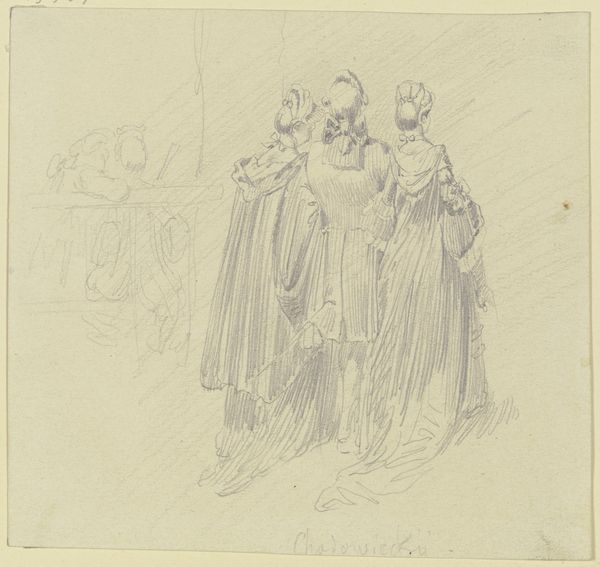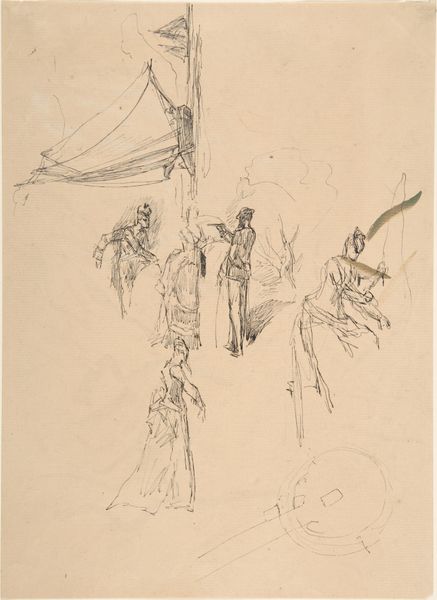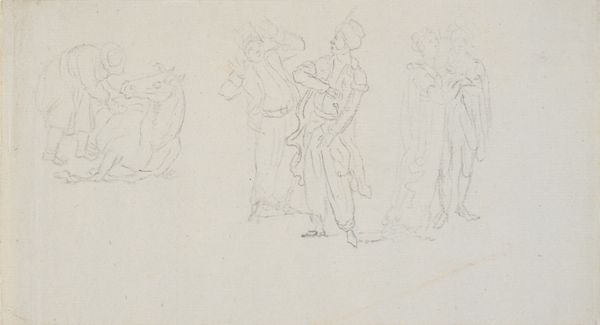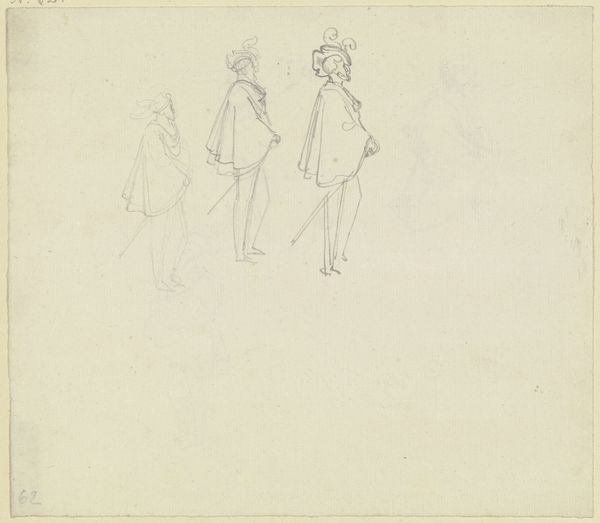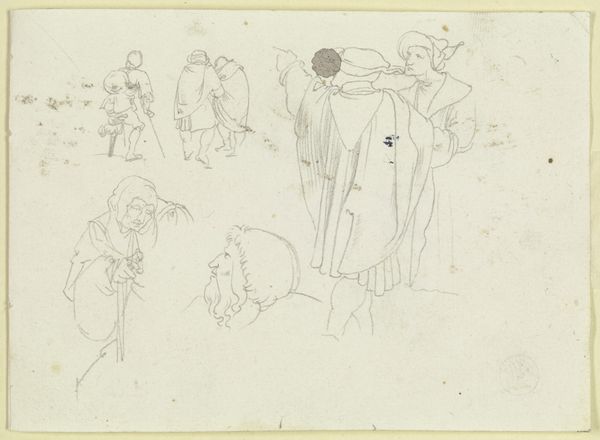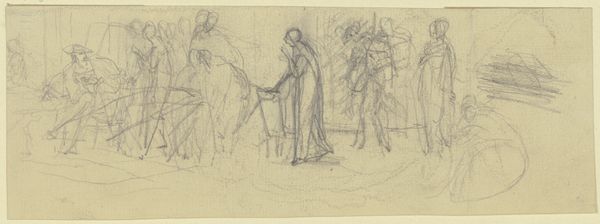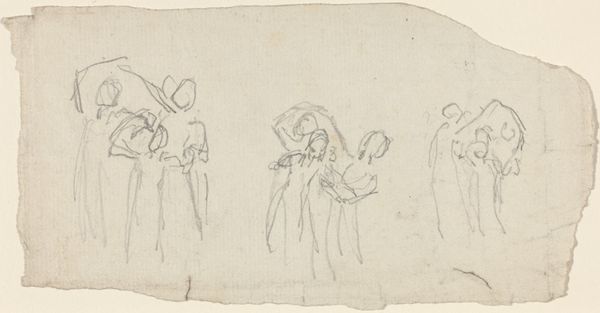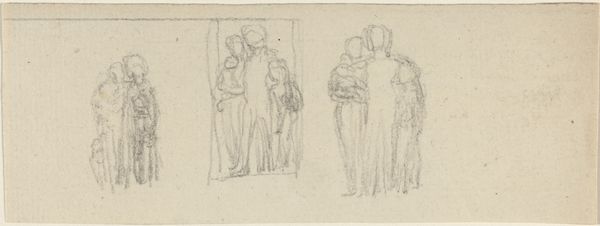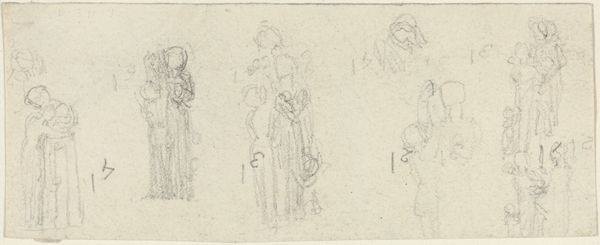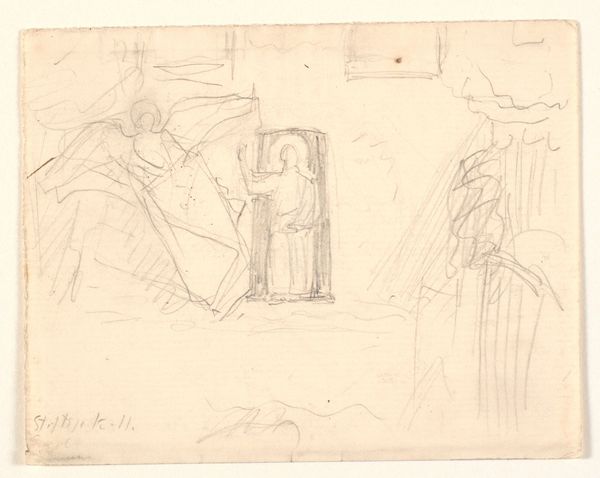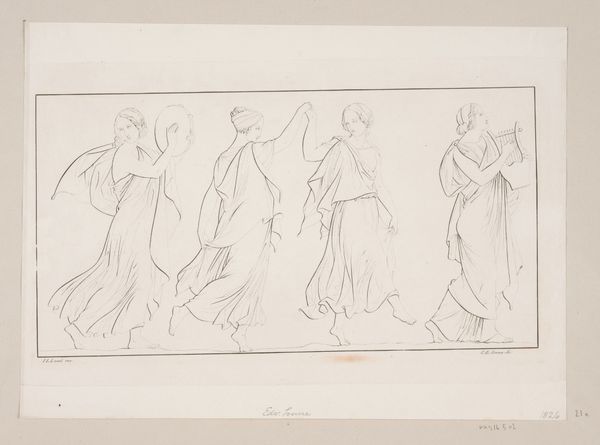![Sheet of Studies [recto and verso] by John Flaxman](/_next/image?url=https%3A%2F%2Fd2w8kbdekdi1gv.cloudfront.net%2FeyJidWNrZXQiOiAiYXJ0ZXJhLWltYWdlcy1idWNrZXQiLCAia2V5IjogImFydHdvcmtzLzBmYjBkMDFjLTIxOTItNDA5My04YzE3LWExM2NkOTI3ZTUyZC8wZmIwZDAxYy0yMTkyLTQwOTMtOGMxNy1hMTNjZDkyN2U1MmRfZnVsbC5qcGciLCAiZWRpdHMiOiB7InJlc2l6ZSI6IHsid2lkdGgiOiAxOTIwLCAiaGVpZ2h0IjogMTkyMCwgImZpdCI6ICJpbnNpZGUifX19&w=3840&q=75)
drawing, pencil
#
drawing
#
figuration
#
romanticism
#
pencil
#
line
Dimensions: overall (approximate): 4.9 x 7.3 cm (1 15/16 x 2 7/8 in.)
Copyright: National Gallery of Art: CC0 1.0
John Flaxman made this graphite sketch on paper sometime in the late 18th or early 19th century. It depicts a regal, standing figure surrounded by onlookers. Flaxman was working at a time when British artists were questioning the grand, historical style that had long been associated with state-sponsored art institutions. Instead, artists looked to classical antiquity for models of civic virtue. Flaxman spent several years in Rome, where he sketched ancient sculptures and absorbed their simple, linear style. This is visible here in the stark outlines and minimal detail of the figures. The inscription at the bottom suggests that the sketch might be a study for an illustration of Shakespeare’s “A Midsummer Night’s Dream”. This play was popular at the time, offering a world of fantasy and escape from the realities of industrializing Britain. To understand this work more fully, we can examine Flaxman’s other drawings, letters, and publications, as well as the broader artistic and literary culture of his time. In doing so, we start to see how art is not just the product of individual genius, but also of social and institutional forces.
Comments
No comments
Be the first to comment and join the conversation on the ultimate creative platform.
